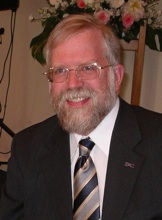About me



I received a B.Sc. (with Honors - proud of that) in Astrophysics from the California Institute of Technology in 1969, where I worked part time on the Leighton-Neugebauer infrared 2 Micron Sky Survey, the first deep survey of the sky at infrared wavelengths.
Looking for some adventure, but also to avoid more years of sitting in lectures, I headed to Mt Stromlo in Australia, where PhD scholars had four years to do their doctoral research - with no lecture courses! I received my PhD from the Australian National University in 1974. My research involved the construction of one of the first high resolution echelle spectrographs in astronomy, and its application to elucidating differential chemical abundances in dwarf stars of widely differing ages and mean abundance levels.
I continued this work as the Bart J. Bok Fellow at the Steward Observatory of the University of Arizona from 1974 to 1976.
Then I moved across the street to Kitt Peak National Observatory and worked with Roger Lynds on pioneering the application of the then new 2D (digital TV) vidicon systems and early CCD detectors for photometry of faint stars and galaxies.
From 1976 to 1983 I held the position of Astronomer at the Kitt Peak National Observatory, Tucson, where I worked on the technique of multi-aperture spectroscopy for observing very faint, high redshift galaxies, and was project scientist for several new observing instruments including an early speckle spectrograph for obtaining spatially resolved spectra at resolutions approaching the diffraction limit.
In 1978, Augustus Oemler, Jr., and I discovered that rich galaxy clusters at large distances (z>0.2) have an excess of galaxies with blue colors when compared to similar nearby low redshift clusters. This is now known as the Butcher-Oemler Effect.
A need for adventure called again, and in 1983 I accepted the position of Professor of Observational Astronomy at the University of Groningen and Director of the Kapteyn Observatory in the Netherlands. My research in the ensuing period focused on galaxy evolution, taking advantage of both the Hubble Space Telescope and ground based systems. But I also pioneered the use of radioactive chronometers in stellar spectra to estimate the age of the Galaxy. Also, the technical team at the Kapteyn Observatory and I developed a stellar seismometer, based on a stabilized Fabry–Pérot interferometer, which achieved metre/sec stability and was used to detect seismic oscillations on Alpha Centauri.
From 1991 until 2007 I served as Director of the Netherlands Foundation for Research in Astronomy (ASTRON), a national astronomical laboratory. I oversaw Dutch contributions to innovative instrumentation for observatories around the world and for the James Webb Space Telescope. We helped lay the technical groundwork for the global Square Kilometre Array radio telescope project. I also led the funding efforts and interdisciplinary development of LOFAR, which is an innovative low-frequency radio telescope. LOFAR has the potential to look back in time to the early epoch of the Universe just after the Big Bang when the first luminous objects were forming. For this work, I was awarded a knighthood in the Order of the Netherlands Lion.
Since September 2007, I have been the Director the Research School of Astronomy and Astrophysics and of the Mt Stromlo and Siding Spring Observatories at the Australian National University. I currently lead Australian participation in the multi-national, billion-dollar Giant Magellan Telescope project, and am working to make the Mt Stromlo campus a cooperative centre for technology development for both astronomy and space science.
Bio

I am a research astronomer by training. My main research activities have been in observational astronomy. My overall research approach has been to try to advance astronomical knowledge by developing innovative instruments that improve the observational art.

